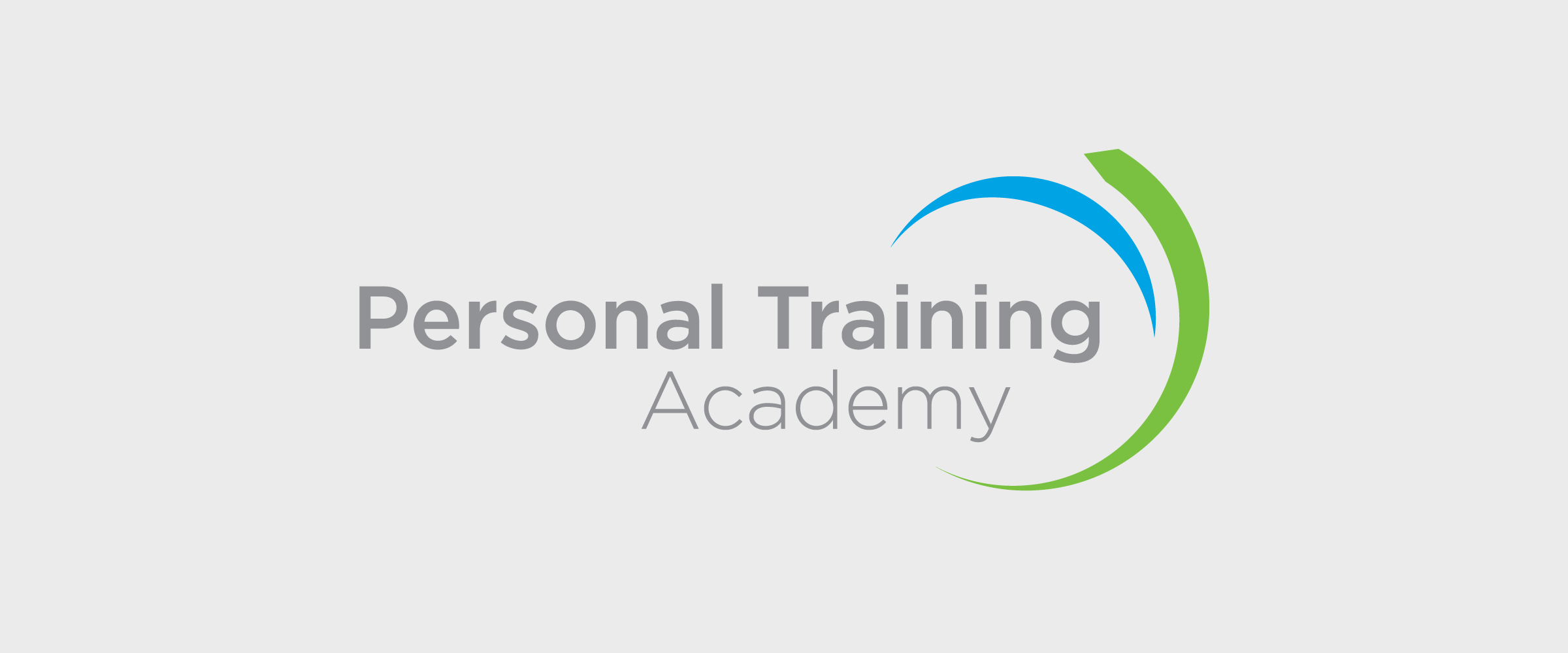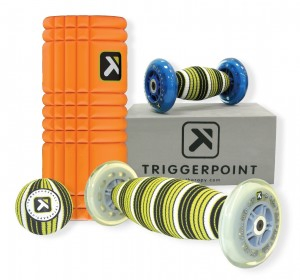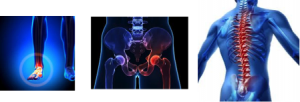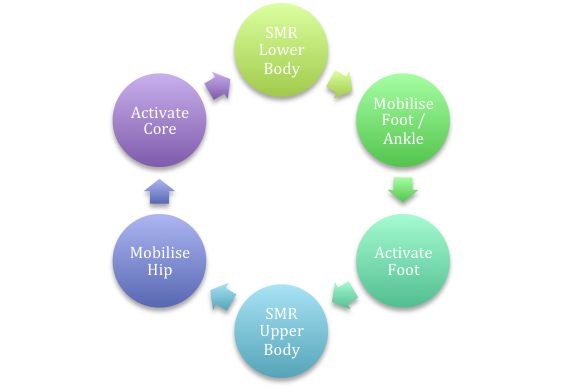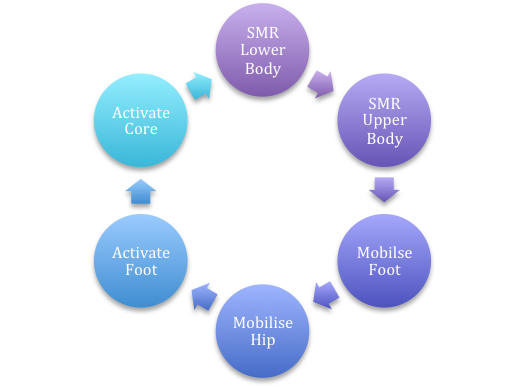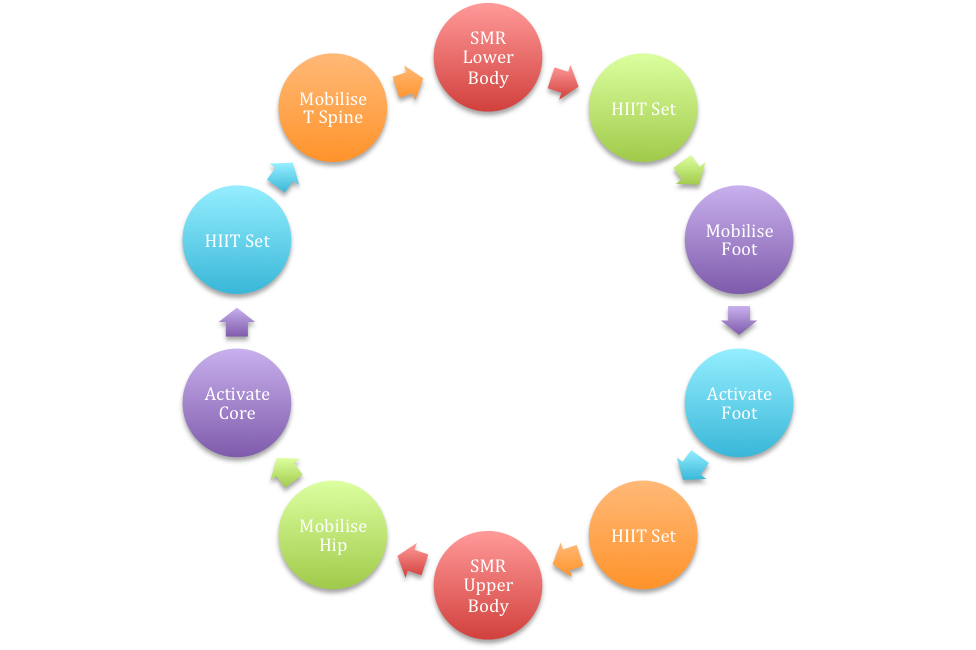We often get asked when teaching Trigger Point Performance or PT Academy Certificate IV in Fitness: “Where should we put Self Myofascial Release (SMR) into our programming?” It’s a fair question. With all the science and data around training results, a lot of people in our industry concentrate on the main, or we like to term it at PTAG ‘Goal Based Movement’ (GBM) phase of the session. Sure, that’s when your clients set length and intensity will dictate the training response and most trainers are very aware of how to program for this. But when should you do mobility and stability activities?
The correct answer here is: everywhere. In terms of programming, SMR can be used anywhere in your programming. The most powerful impact is seen at the start of a session. The benefits of SMR have been well documented for a while now and one of the better benefits is increasing range of motion. So it kind of makes sense to help people move as best as they can before putting them into the Goal Based Movement phase.
Mobilisers are another great way to, as inventor of mobilisers, Ian O’Dwyer terms it ‘pinch’ movement for our body. They also help the body’s mobile structures communicate better to improve overall body rhythm and movement. See http://odonmovement.com for more on mobilisers.
Stability based ‘activation’ exercises are a great way to help people ‘switch on’ their body to gain an understanding of where a particular joint is located in their body and how it feels in a stable position. The book ‘A Guide to Better Movement’ by Todd Hargrove describes this beautifully.
One common issue we see with our Cert IV students from a programming perspective is this: What does this mean in real life? How do I use this in a program designed to help my clients move better? The big caveat to the information I will detail below is: It should all be specifically CLIENT BASED!
In a group setting the issue of course is that everyone is different. The good news is that when they’re done well, SMR, mobilisers and stability drills should not harm anyone. Plus, if we look at the integrated Myofascial network of our body in a tensegrity structure, helping one part of the body move better should help the rest of the body as well.
We know that most of our client’s lives are spent in a seated position; this usually leads to postural reinforcements and compensations common to many of our clients. Based on this, some great areas to ‘free up’ are:
Foot/ankle
Hips
Thoracic spine
There are varying methods of achieving an improvement of movement in these areas and the purpose of this blog is not to instruct you on them. There are specific courses for that purpose. This blog is designed to give you an example of how you might incorporate mobility and stability into your sessions. I will give an example of what a mobility / stability movement preparation circuit could look like and also an example of how you might incorporate mobility and stability drills into more high intensity interval training movement.
Movement Preparation: The purpose here is to get people moving as best as they can at that point in time. This is especially important if you’re about to put their body under high amounts of stress in the goal based movement stage.
Goal based movement: The purpose here is to include SMR and mobility to keep people moving as best as they can during intense bouts. It is also a good way to work in the correct work rest ratios into a HIIT session depending on what intensity you’re working at. An example layout here is:
As you can see, there are two bouts of mobility or stability between each effort set. This works well as it gives people a 1:3 work rest ratio, which lets their heart rate recover before another bout of high effort.
These are just some examples of the many ways you can incorporate mobility drills as circuits into your group or even one-on-one sessions.
– Chaddy.
About the Author: Chaddy has been a PT for over 10 years. He is an International Fitness Presenter, TRX Senior Master Instructor, PTA Global Faculty member, Trigger Point Performance Master Instructor and Kettle Bell Instructor. His passion for movement and coaching continue to drive his learning and inspire others to learn more about the human being not just the human body.
